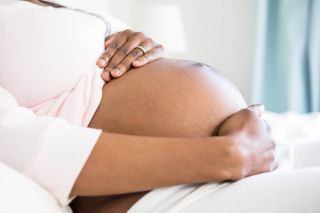Pregnancy
Proving What You Already Believe Is Easy
How one test result contaminates others, even when the stakes are life and death.
Posted June 25, 2024 Reviewed by Ray Parker
In my last post, I reviewed the tragic case of Moira Akers—a stay-at-home mother who was sentenced to 30 years in prison for giving birth to a stillborn baby. What was the lynchpin of Maryland’s case against Akers? A centuries-old test wherein floating lungs signify that a baby was born alive—the hydrostatic lung float test, also known as the floating lung test (FLT).
Akers’ (Unsuccessful) Appeal
Akers’ representation unsuccessfully appealed her conviction (based, in part, on the biasing effects of the HFT). In an unreported opinion (in January 2024), the Appellate Court of Maryland upheld her conviction, ruling that “the Circuit Court did not abuse its discretion in permitting expert testimony regarding the hydrostatic lung float test.”
The opinion relied heavily on the argument that the HFT was one of several tests performed by the state examiner and that these tests were generally “consistent” with a live birth. The summation of these tests led to Mourtzinos concluding that “… to a reasonable degree of medical certainty, the baby was born alive, that the child’s lungs were aerated, and that the cause of death was asphyxia and exposure, and that the death was a homicide.” It is worth noting that phrases such as “to a reasonable degree of medical certainty” or “to a reasonable degree of scientific certainty” have been broadly discouraged. Such phrases are rarely quantifiable and can be easily misinterpreted by jurors who are instructed to judge a case on whether there is sufficient evidence to prove “guilt beyond a reasonable doubt.” In this case, it is unsurprising that a medical doctor’s assertion that, to a reasonable degree of medical certainty, an infant’s death was the result of homicide would result in a murder conviction.
Conflicting Pathologist Conclusions
Yet, another pathologist (Gregory Davis) reviewed the autopsy and noted all of Akers’ risk factors for stillbirth. He emphasized portions of the report citing infections in the pancreas, placenta, and umbilical cord. Another OB-GYN testified that he believed (based on the amount of blood present) that Akers suffered from a placental abruption, which can also lead to stillbirth. The infant was also subjected to external exams, bloodwork, and X-rays—none of which revealed signs of foul play. All of this led Davis to conclude that there was evidence of both a stillbirth and a live birth—a conclusion that could hardly produce judgments of certainty (medical or otherwise) regarding the cause of the infant’s death.
Medicolegal death investigations have been plagued with issues for decades. Practitioners often lack standardization (as in this case), and conflicting conclusions are not uncommon in the field. Further, autopsies are ultimately qualitative assessments that will often not paint a clear picture. As in this case, evidence can often exist supporting two conflicting conclusions.
The Appeal of the HFT
However, the HFT is allegedly designed to produce a conclusive outcome: the infant had oxygen in its lungs, or it did not. The simplicity of the HFT outcome will likely muddy the waters of the more qualitative autopsy thanks to confirmation bias, which has been specifically replicated in forensic contexts. If someone already believes something, additional evidence will be interpreted to support that belief (particularly if the evidence or the context is more ambiguous). Thus, after the test (and a microscopic examination of the lungs), the examiners concluded that the baby was born alive and died of asphyxia and exposure due to Akers’ actions. Even the pathologist’s own verbiage, “… those results were consistent with a variety of different tests which in her opinion were also indicative of live birth”, indicates that they were looking for confirmation of their existing opinion (conferred by the results of the HFT). Psychologists have long found that when people are looking for something, they are skilled at finding it.
Further, numerous cases have illustrated the impact of bias on forensic pathologists’ judgments. One study found that 133 forensic pathologists were significantly more likely to conclude a child’s death was a homicide if the child was Black (versus white) and brought to the hospital by the mother’s boyfriend (versus a grandmother).

Prosecuting Pregnancies
Now that the court has prioritized the state’s interest in potential life over the rights of living women, cases like Akers’ will grow. In several cases, including Akers’, the fact that a woman considered abortion was used to prosecute her criminally (by, for instance, admitting her search history into evidence). Minority women, particularly those who are poor, are already at an increased risk of facing pregnancy-related prosecutions. Black women are more than two times more likely to have a stillbirth than White women; their risk of dying during childbirth is also significantly higher.
The U.S. is home to over 20,000 stillbirths each year, yet the problem is still under-resourced and ill-understood. The infant mortality rate in the US is the highest among peer countries (including Australia, Canada, France, Germany, Japan, the Netherlands, New Zealand, Norway, South Korea, Sweden, and the UK). But, the public is often shocked to hear these facts or learn that only a fraction of stillbirths are attributed to congenital abnormalities and that many are preventable. Some babies died just minutes before they were born and were placed in their parent’s arms while they were warm to the touch.
Until we better understand what causes stillbirths and other pregnancy complications, poor minority women will pay the price for our ignorance. After all, it is easier to live in a world with villains who would kill their babies than one that has the resources to prevent its babies from dying yet often fails to do so.





